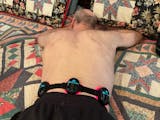Unveiling Healing Power: Multiwavelength Photobiomodulation for Tibial and Ankle Fracture Soft Tissue Injuries
Within the field of orthopedic medicine, the pursuit of reliable and secure treatments for repairing soft tissue injuries linked to tibial and/or ankle fractures is of utmost importance. A recent research investigation examined the effectiveness and safety of multiwavelength photobiomodulation (MPBM) within this scope, revealing its promise as a therapeutic approach.
The study involved the random assignment of participants into two groups: the MPBM group and the control group. The main focus was on wound healing, which was measured using the Bates-Jensen scale. Progress was monitored through daily assessments. The research comprised twenty-seven adults who were hospitalized, and the outcomes indicated positive results supporting the effectiveness of MPBM.
The control group was compared to the MPBM group, and it was found that the MPBM group showed significant improvements in various important factors. One notable improvement was seen in the daily mean Bates-Jensen scale scores, indicating that the MPBM group had superior progress in wound healing. Furthermore, the MPBM group had a significantly lower incidence of infection at the site of external fixator pins compared to the control group.
Additionally, individuals who were part of the MPBM group experienced a more positive shift in their average daily pain scores when compared to those in the control group. This emphasizes the potential advantages of MPBM in relieving pain. It is worth noting that the MPBM group also exhibited quicker healing of wounds, with a shorter duration for complete recovery compared to the control group.
By conducting subgroup analysis, the benefits of MPBM were better understood, especially for patients with milder symptoms. These individuals observed notable improvements in their Bates-Jensen scale scores and experienced faster wound healing compared to their counterparts in the control group.
The study's results indicate that MPBM shows potential as a secure and efficient approach to decrease the time it takes for wounds to heal, alleviate pain, and reduce the risk of infection in patients with soft tissue injuries related to tibial and/or ankle fractures. As the field of orthopedic medicine progresses, the integration of innovative techniques like MPBM could provide fresh opportunities to enhance patient outcomes and expedite recovery.
















Share:
Exploring Laser Therapy as an Adjunct Treatment for Alcoholism
Optimizing Healing: Low-Level Laser Therapy for Wrist and Hand Bone Fractures